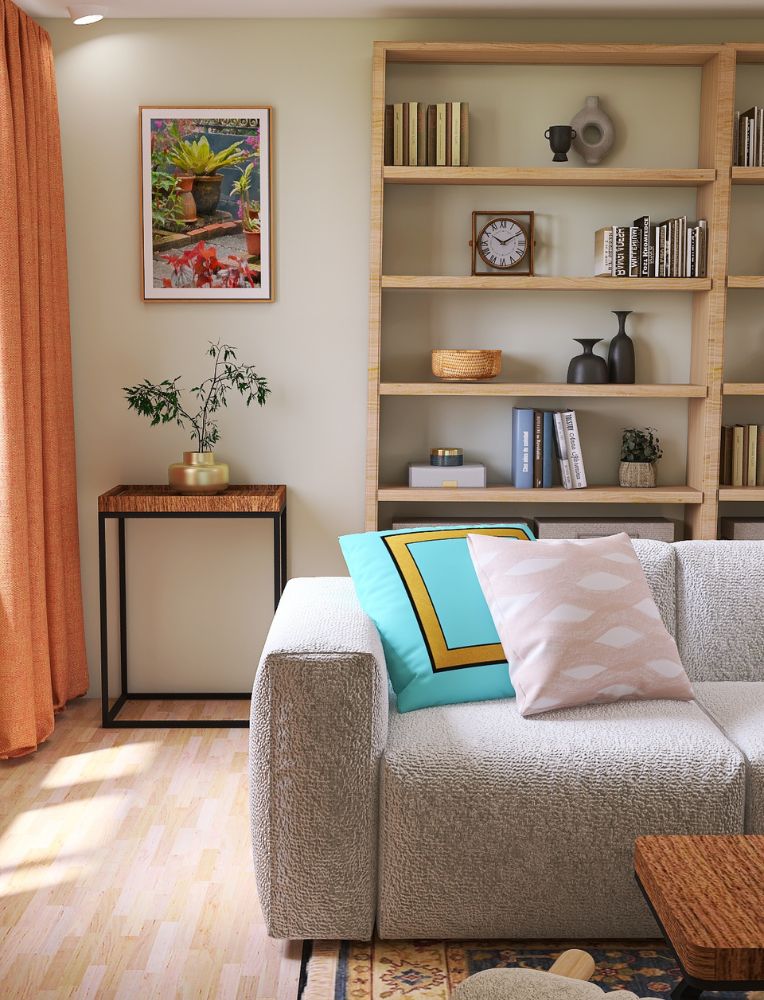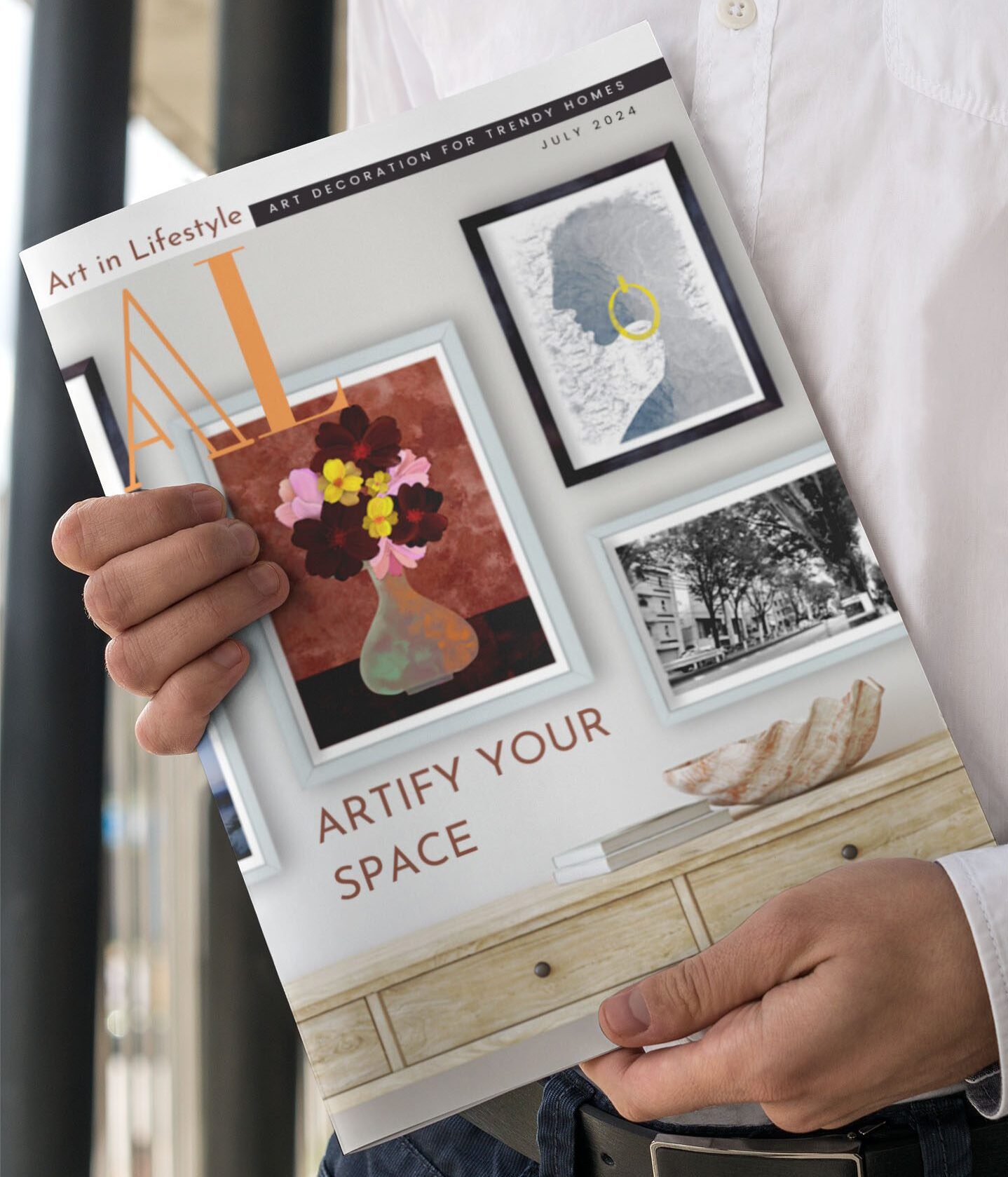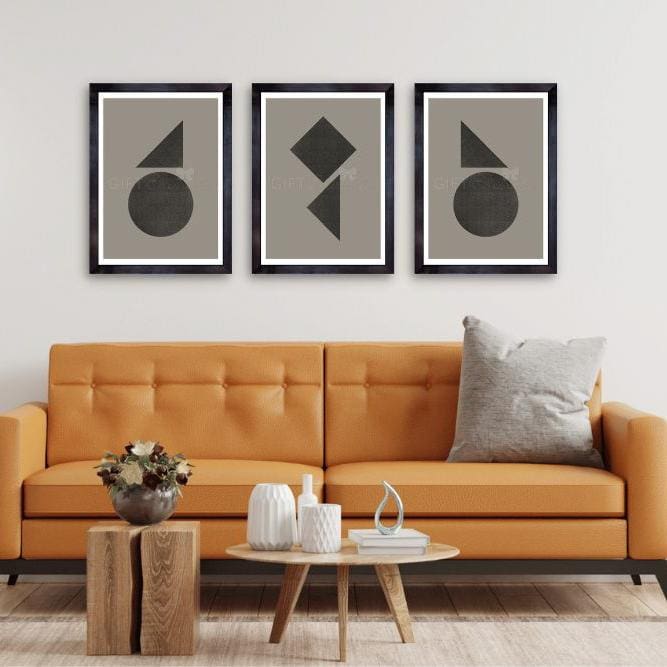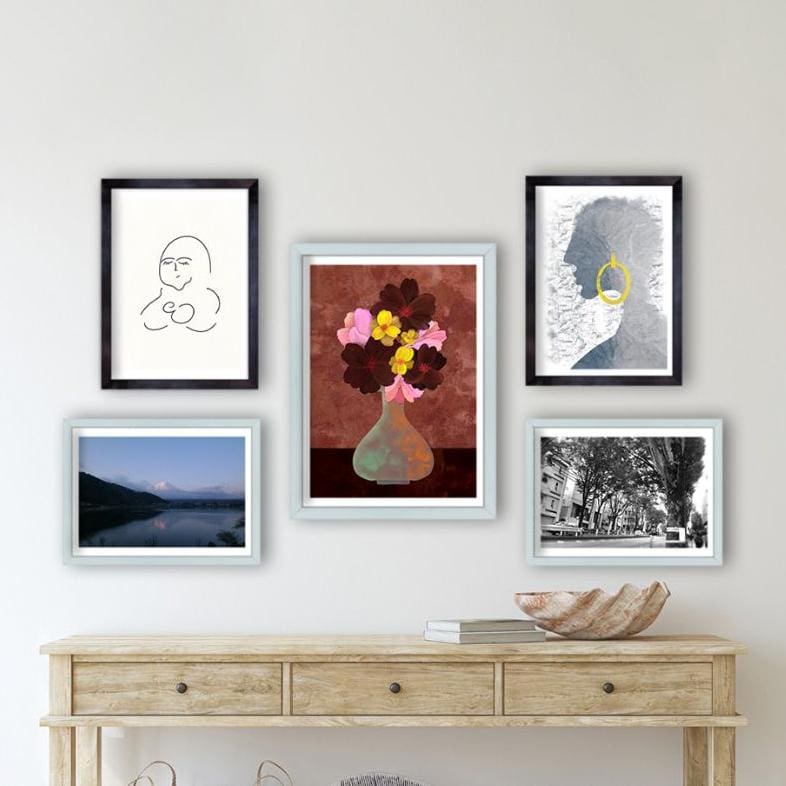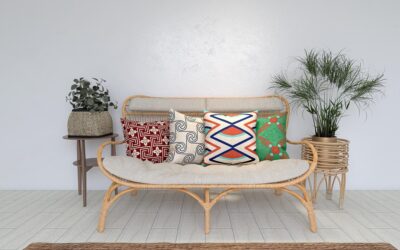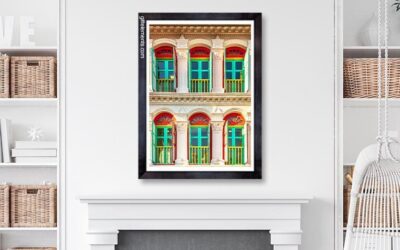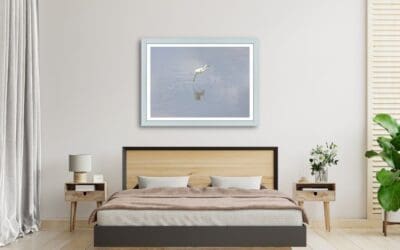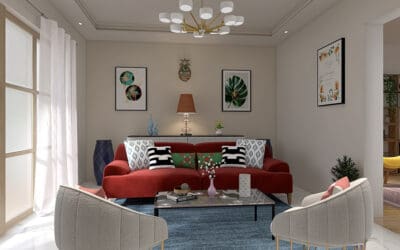Art plays a prominent role in home decor. Art is both a reflection of your personality and an expression of the mood you want to have at home.
So without a doubt, art can bring out the best in your home interior design. Apart from enhancing the aesthetic value of your living space, art allows you to add different focal points around your room simply for you to enjoy.
Adding wall art is the easiest way to fix the balance of items in a room. It adds colour, style and shape that pull together your entire interior style.
So it’s important to have some knowledge in good wall art decoration. There are different ways to do this but much of it also depends on your personal taste and the indoor space that you have.
Watch this video for more tips:
Where to place your art?
Don’t worry … art selection and placement is not an exact science. The choice of art is also meant to be personal. But there are ways to arrange art on your wall that would bring out the best in the art and the interior style.
First and foremost, hang or place art away from direct sunlight, rain and wind. So it may not be a good idea to exhibit your art outdoors or too close to windows. It’s possible to frame art in UV-protective frames that prevent fading. But this can be very expensive.
Usually, you place or hang art at these spots in your home:
- Above the sofa in the living room
- Dining room wall near the dining table
- Above a console table
- Above the bed in the bedroom
- At the entry way near the front door
- Food prep area near the kitchen (away from the cooker)
What is the ideal art size?
The art size really depends on the size of the space available on your wall or your shelves. But a space is never too small or too big for art. This is because art can be ordered in varying sizes.
But as a rule of thumb, the art size should be about two-thirds (2/3) the size of the furniture. This can comprise of one-single art piece or a group of a few smaller art sizes.
Always make the right measurements of your space and plan ahead before buying the art. Tape pieces of paper on your wall to visualise the art placement.
This is important especially if you’re placing art in between other furniture or objects like bookshelves or vases.
How to choose the right art for your home
You don’t need a Degree in Art to buy art. You don’t need to be an expert to own a piece of art. You just need to know your own personal tastes and the interior style of your room.
So, where do you start. It is super vital to always choose art that “speaks to you”. This means you feel a strong connection between the artwork and yourself.
This will, however, take some practice and effort. But it’s gonna be fun, I promise you.
- First, keep looking at lots and lots of art
- Store photos of the artwork
- Keep a list of what you like and what you don’t like
- From your like list, select which art will suit your home decor
Match the art with your home decor
The easiest way is to first pick out the dominant colour in your room. The dominant room colour should appear on the art as either the primary or secondary colour. If the art displays primarily the dominant room colour, then a harmonious match is achieved.
If the dominant room colour appears on the art as a secondary colour, then there may be other colours on the art that could introduce colour variety into your room.
The same rule applies if you are creating a gallery of several artwork placed side-by-side. Start with the initial reference artwork i.e. the first artwork selected based on the dominant room colour.
Each additional art next to it should contain colours that can be found in the reference. If the reference artwork contains many colours, match with 2 to 3 dominant colours on the reference artwork.
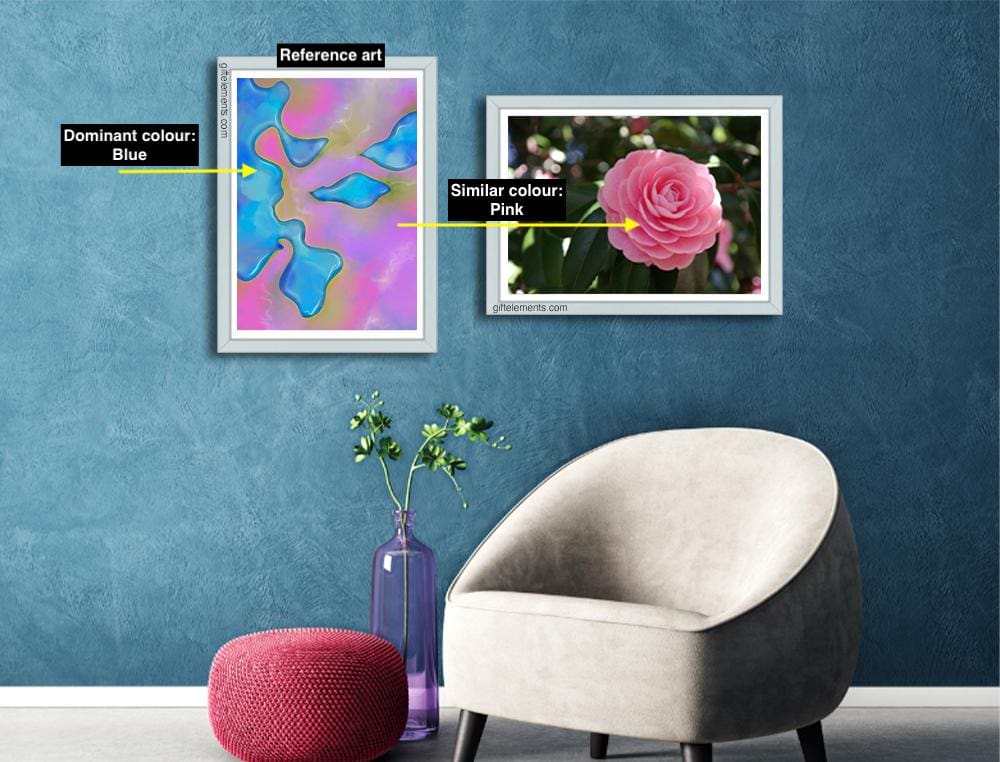

When selecting art, we should take the shape of the artwork and lighting into consideration. Circular and more fluid shapes add softness and flow into a room.
Sharp angular and straight shapes are more serious and sombre. Abstract and human forms will add a more organic, relaxed and sophisticated atmosphere.
How to hang art on your wall
The placement of your main artwork will dictate where the other art pieces go. The main central art can either be a singular piece or a combination of 2 to 3 cohesive artwork. You should follow two important rules to place the main art perfectly for maximum impact.
First, ensure that the mid-point of your main art piece is at least 57 to 60 inches (145 to 152 cm) above the floor. But if the members of your household are not that tall, you may need to hang the art a little lower.
Secondly, it’s best that the middle of the art is at eye-level.
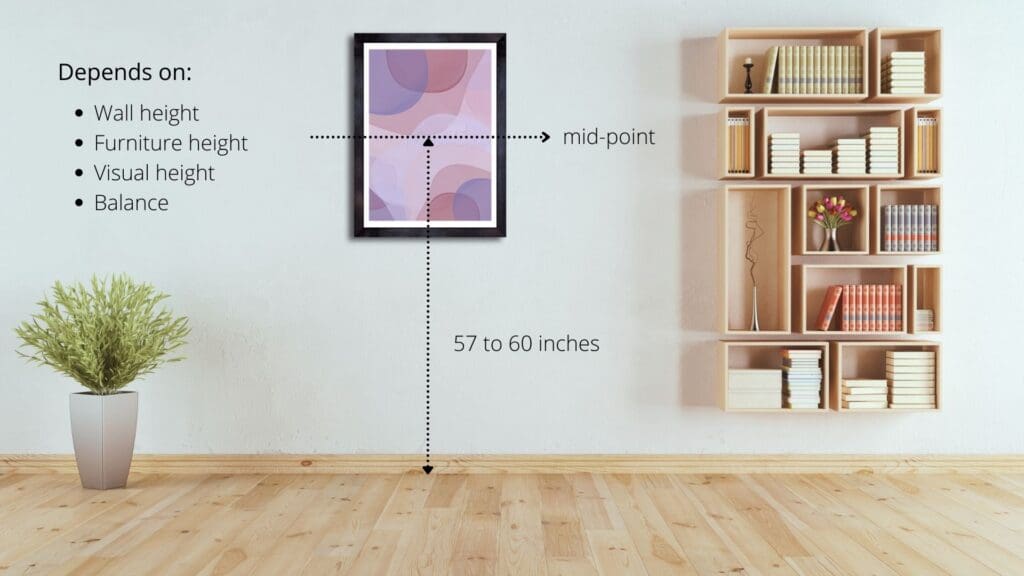

How should you arrange wall art?
How people view your art pieces on the wall depends mostly on their arrangement. When viewed as a whole, a good arrangement turns all the wall art into a cohesive visual display. You can play around with some concepts here to making your arrangement stand out.
1. Singular Art
An isolated single artwork becomes a focal point. It single-handedly attracts all the attention. If you have minimalist preferences, this will work well for your walls.
2. Symmetrical Gallery Arrangement
Symmetry exudes a sense of order, tradition and formality. You can achieve this by aligning all the artwork perfectly. Display art frames of the same size and colour so that they can be placed in a straight grid arrangement with two, three or four art pieces in a row.
For the best effect, the art theme and colour should also be similar. This arrangement is pretty, neat and safe.


3. Asymmetrical Gallery Arrangement
Asymmetry makes your room look inviting, relaxed and eclectic. Get frames of different sizes and make a collage of different pieces on the wall. You could also play with different themes to bring out the vibrancy of your room.
Instead of matching colours, try experimenting with complementary and contrasting colours.


4. Floor-to-Ceiling Salon Style
This idea may seem too cluttered but if it is executed well you can turn your entire wall into an interesting art gallery. This works very well with photographs of loved ones. Staring at the wall turns into a journey down the lane of nostalgia.
You may also choose to divide the wall into segments, each segment exploring a different theme or colour template.
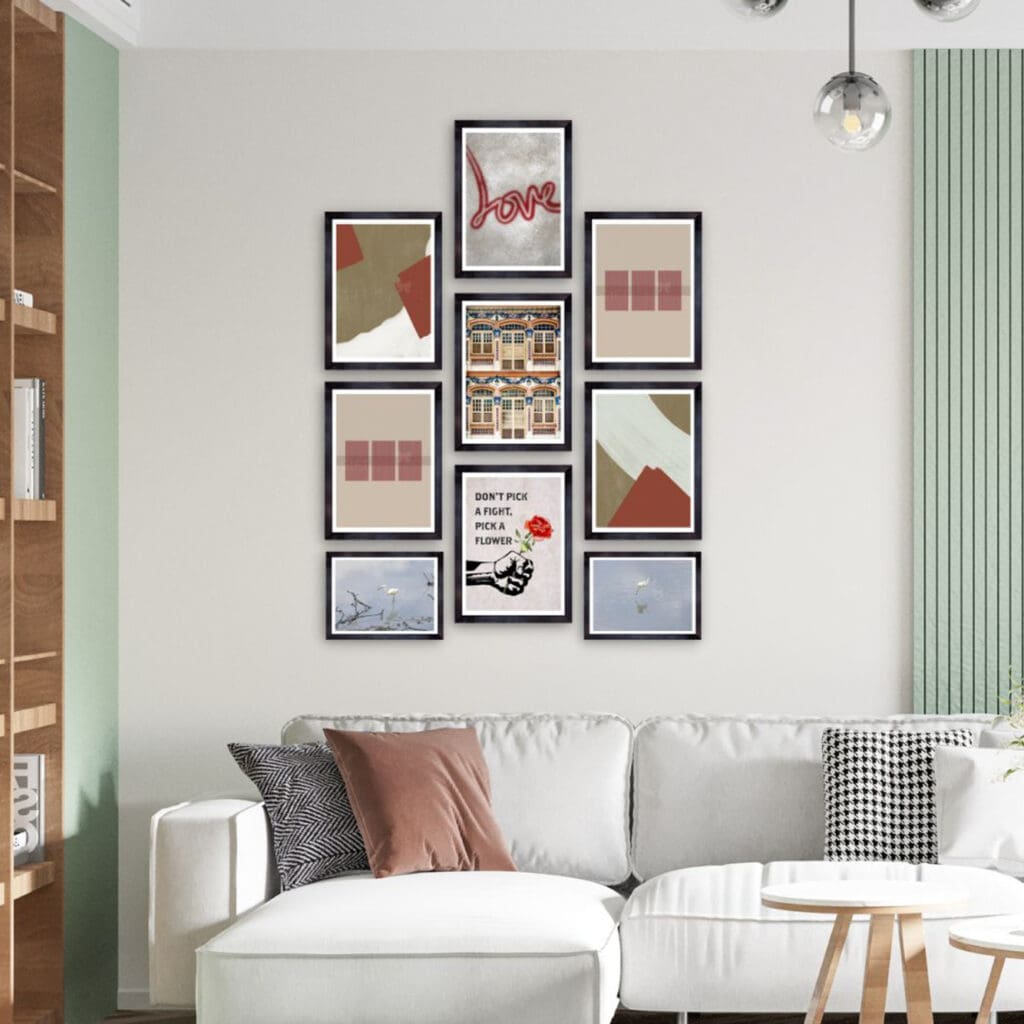

5. Leaning on the Shelves or Floor
A friend once told me he doesn’t like to drill hooks into the wall. So, there’s no way he will hang art on his walls. Not all wall art needs to be nailed into the wall. Art can always be placed on shelves or table consoles too.
You can let the bigger art pieces lean against the wall with the floor as their base. This gives a more homely and informal vibe.
Watch out for pets and children who could knock off the artwork. Just make sure the art is organised neatly with other objects to avoid looking messy.
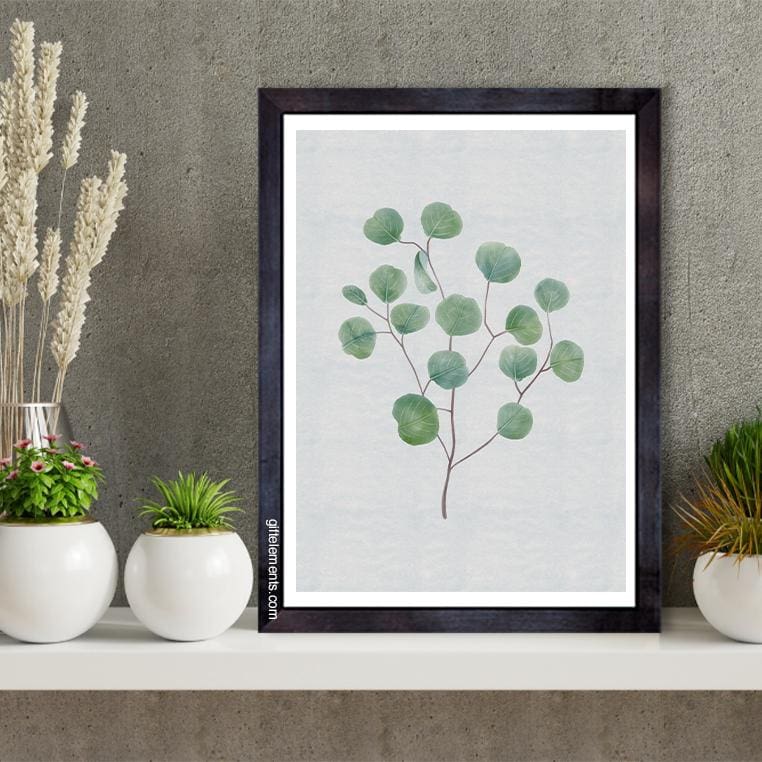

Perfecting The Visual Balance
The human psychology is trained to find comfort in surroundings that are well-balanced. To add visual balance on your wall with artwork, find the focal point of your wall first.
Place the most prominent piece or pieces at the focal point. Then you can place smaller artwork around it. Do not make one side heavier than the other.
You can also create a rectangular or circular shape with art by placing them within an imaginary boundary. Here’s a useful guide on how art can bring you wealth and happiness!

